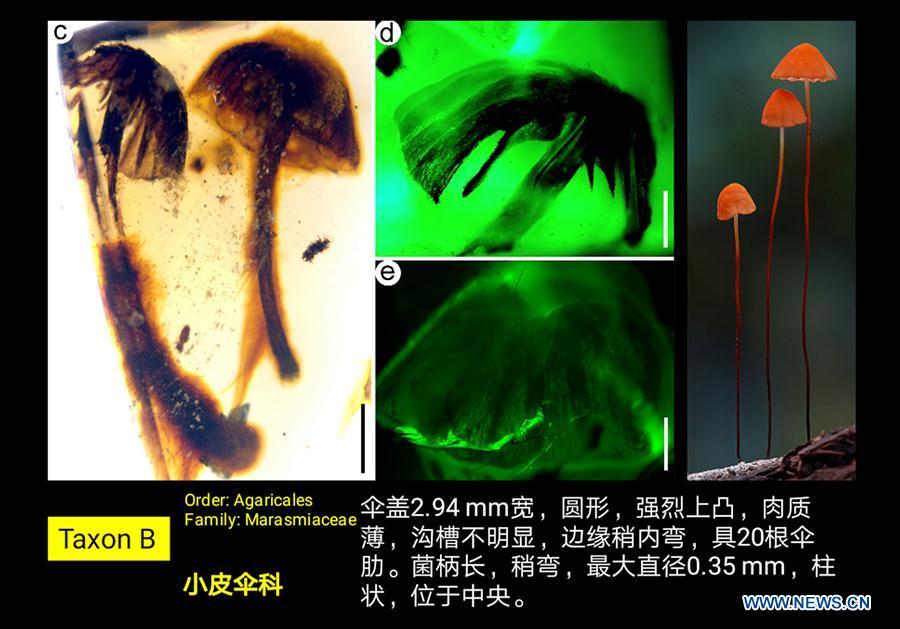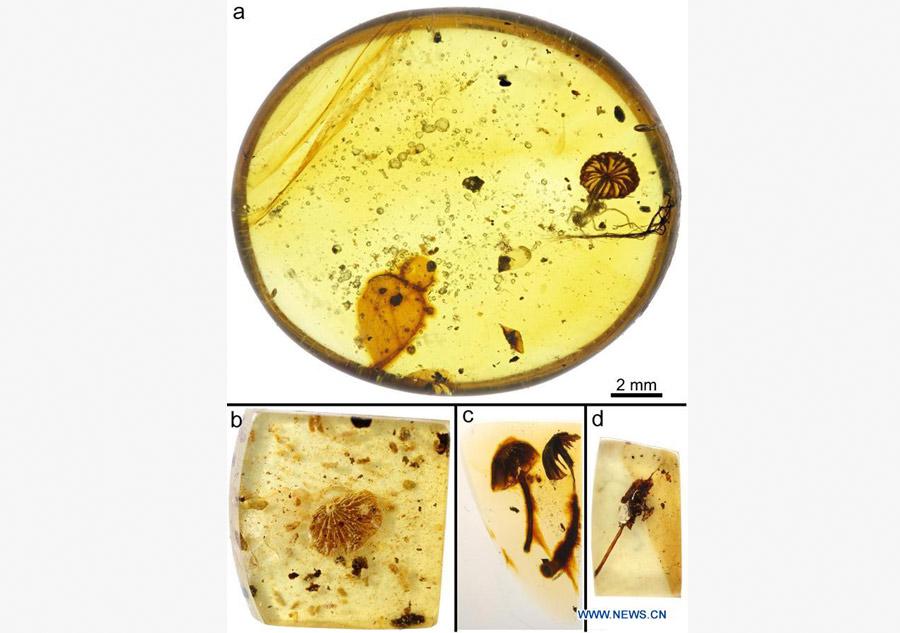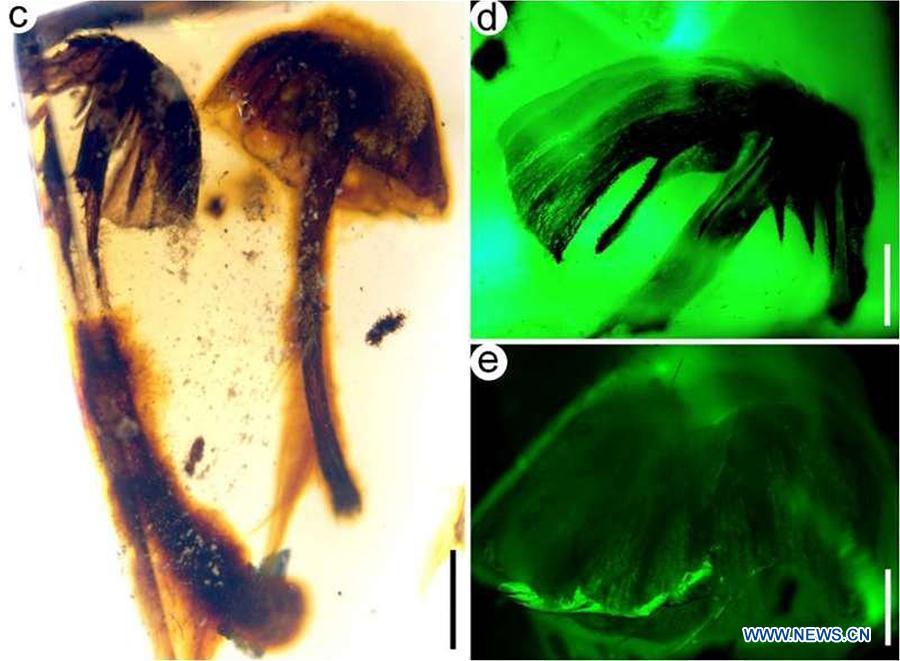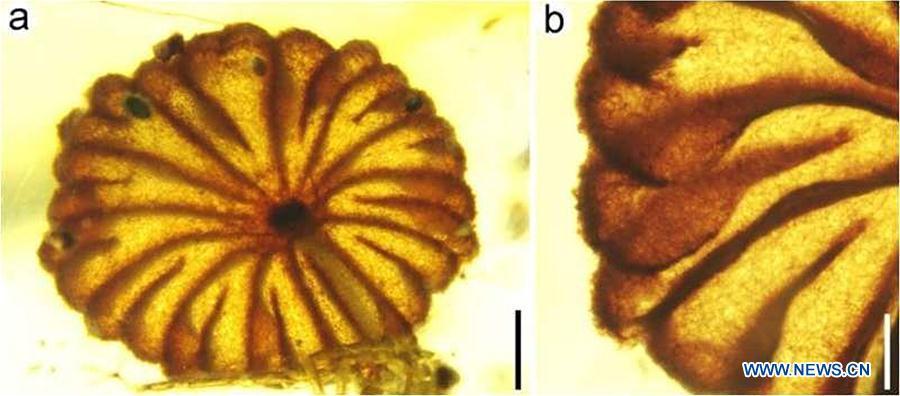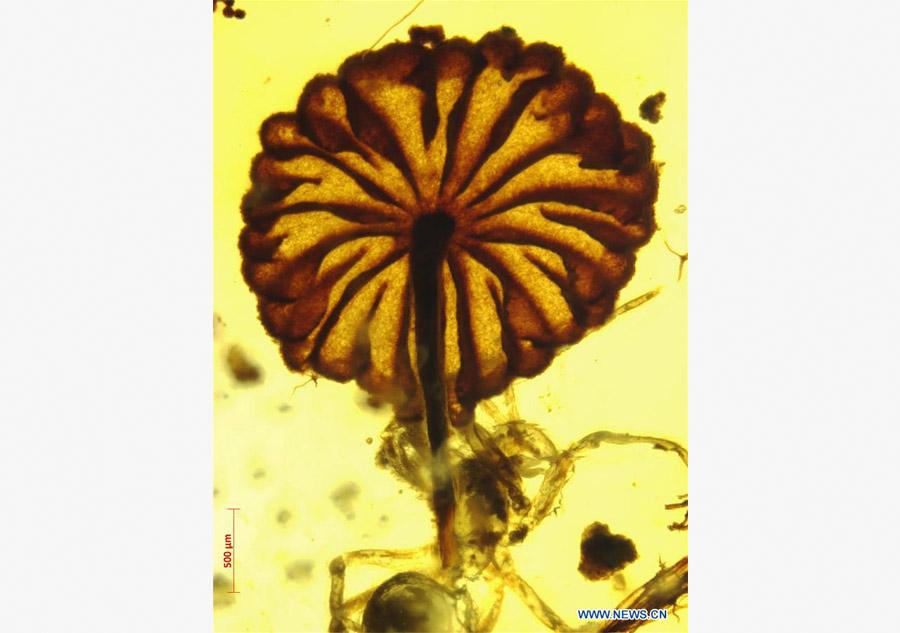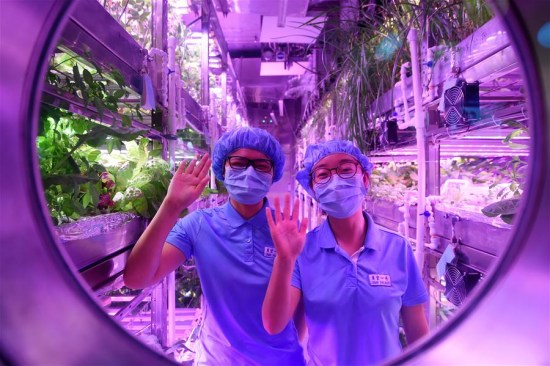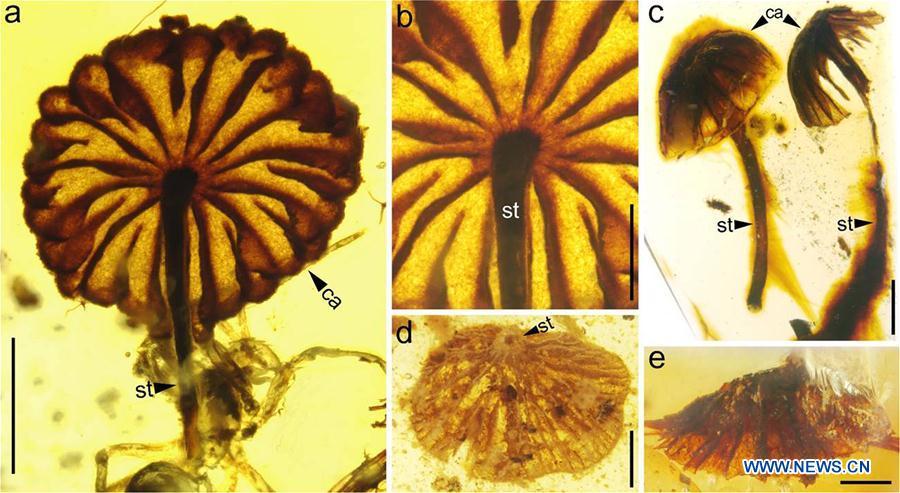
Fossilized mushrooms, said to be from the Cretaceous period about 100 million years ago, were discovered in amber by scientists from the Chinese Academy of Sciences' Nanjing Institute of Geology and Palaeontology, as well as from New Zealand and the United States. They are believed to be the oldest mushrooms ever found. The scientists noted a stalk and a complete intact cap containing distinct gills are visible in most of the mushrooms, pictured A to E. (Photo/Xinhua)
Paleontologists from China, New Zealand and the United States have found four intact mushroom fossils, sources with the Chinese Academy of Sciences said Friday.
The four, well preserved in Burmese amber for at least 99 million years, are the earliest complete mushroom fossils ever found.
The findings represent four species of mushroom. A stalk and a complete cap containing distinct gills are visible in most of the mushrooms, which are two to three millimeters long.
The research team led by Prof. Huang Diying from Nanjing Institute of Geology and Paleontology, Chinese Academy of Sciences, reported the finding after researching more than 20,000 pieces of Burmese amber collected over 10 years.
The team also found three kinds of rove beetle, which feed on mushrooms, in pieces of amber 125 million years old. The discovery highlights the palaeo-diversity of mushrooms, pushing back the presence of agaric mushrooms by at least 25 million years.
Mushrooms are common and morphologically diverse fungi. Their bodies are soft and ephemeral and therefore extremely rare in fossils. Until the recent discovery, only five species of mushrooms were known exclusively from amber. Among the previous five species, one was found in a 99-million-year-old piece of damaged Burmese amber, another in a 90-million-year-old piece of New Jersey amber and the three remaining species in 20-million-year-old Dominican amber.







